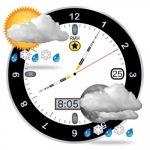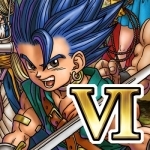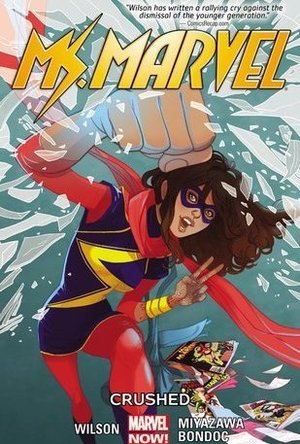Joe Goodhart (27 KP) rated Ms. Marvel: Volume 3: Crushed in Books
Nov 30, 2020
So, first let me start off by sharing a little honesty.. I read the first volume 4 or 5 months ago. I thought it fun, but not enough to pursue reading further volumes. A lot has gone down in my life since that first outing. For those of you who either a) do not know me offline, or b) have not looked at my GR profile, I was diagnosed with RRMS (relapsing-remitting multiple sclerosis) in September of last year, then two months later, we said goodbye to Lily, our 14-year-old Mini Schnauzer.
Prior to all that, I used to live a relatively structured life, with plans-of-a-sort as well as a job. I have since had to step down from my job (thanks, MS!). I have also taken to trying to lead a "sloth life". I live each day as if it were the last, preferring to not plan days in advance. I also am trying to let a lot more roll off my back, giving an honest effort to having more fun with life.
One of those things which is appearing to be helpful to my mental well-being and general happiness has been G. Willow Wilson's MS. MARVEL.
GWW took a character who was once Carol Danvers (now Captain Marvel), a superhero whose costume did nothing what so ever to aid feminism or help to have less objectifying looks for our female heroes. She gave Ms. Marvel a proper reboot, presenting us with Kamala Khan, a young Pakistani-American living in NJ. Her character is one of many who were exposed to the Terrigen Mist via a Terrigen Bomb released by Black Bolt, the Inhumans' king; her powers gained gave her the ability to be polymorphic, i.e. shape-changing.
The series presents us with an imperfect hero. Kamala struggles to balance her hero life, while hiding it from her parents. She maintains her Muslim faith, offering us glimpses into her life and much of what it entails. The handling of it is both mature yet fun, giving us a palatable, more open approach to their faith, rather than what the Idiot in the WH has tried to portray it!
Like Marvel's UNBEATABLE SQUIRREL GIRL, MM is clearly a book that, at its heart, lies a good sense of fun, as well as some good life lessons along the way. In an era where the focus appears to be "Gloom Is Good" and "The Darker The Story, The Better", it is truly refreshing to read a book like this one.
As amazing as Wilson's writing is, the series' artists - Adrian Alphona, Takeshi Miyazawa and fill-in artist Jacob Wyatt (Issues 6 and 7) - all did one heckuva job providing artwork that was as fun as the writing it was supporting. All three were different, yet they shared similarities in their rendering of Kamala and her supporting cast, helping to maintain continuity rather than breaking it via wholly dissimilar art.
I know that there only few more volumes before Wilson hands the reins to Saladin Ahmed (MILES MORALES: SPIDER-MAN, BLACK BOLT), with the art being handled by with art by Minkyu Jung. I have seen Wilson's own page, where she seemed very confident in Ahmed's future handling of Kamala's adventures. That, alone, is good enough for me!
Seriously, if you have not checked out, please, please check out the adventures of MS. MARVEL. Your heart and mind, not to mention your soul, will be more the better for it! Promise!

ShutterSnitch
Photo & Video and Productivity
App
See more videos at shuttersnitch.com/videos Wirelessly transfer images to your iPad from your...

Sensor Kinetics Pro
Utilities
App
See your iPhone in motion! Watch your iPhone's gyroscope and accelerometer sensors in action and...

Last Day Survival:Survivor
Games
App
Last Day Survival:Survivor is a free end zombie survival strategy, with only one target for all...

It's A Better Clock Full - Weather forecaster and Lunar Phase calendar
Weather and Education
App
It's a cool, accurate, multifunction clock that is also a Weather Bot forecaster and Lunar Phase...

Guitar Lick Master - 50+ Licks, Ultimate Trainer with Smart Tabs
Music and Education
App
Guitar Lick Master is the ultimate way to learn and practice guitar licks on iPhone and iPod Touch. ...

Ultimate Bird Simulator
Games and Education
App
Soar into a brand new adventure as a majestic Eagle, swift Falcon, or a colorful Parrot! For the...

Pro Metronome - Tempo,Beat,Subdivision,Polyrhythm
Music and Education
App
Pro Metronome - The best metronome app. Period. Featured in Apple's WWDC 2014 showcase "Apps We...

The heartwarming simulation game--Showa Candy Shop
Games
App
Memories with Grandma at the Candy Shop will come back! Follow the story with letters as you run a...

DRAGON QUEST VI
Games
App
Dragon Quest VI: Realms of Revelation , the final instalment in the Zenithian trilogy, is now...
